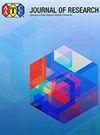纺织废弃物回收:需要严格转变模式
IF 1.2
4区 工程技术
Q4 MATERIALS SCIENCE, TEXTILES
引用次数: 0
摘要
尽管纺织垃圾几乎完全可以回收,但其中约75%最终被填埋在世界各地。这会造成严重的环境和经济后果。这篇综述的重点是纺织品废物统计,它对污染和回收的贡献,以及纺织品废物回收的好处、障碍、类型和技术。由于快时尚强调服装的低成本生产、频繁消费和短期使用,纺织品生产和纺织品废物的产生急剧增加。这个行业的特点是资源稀缺、过度消费和产生大量废物。消费者购买的频率在增加,而服装的寿命却在急剧缩短。由于各种原因,回收利用没有按预期进行,因此这种废物对环境的影响和经济损失会随着时间的推移而增加。纺织业目前贡献了全球约8%的碳预算和20%的工业水污染。每年,由于未使用的服装和缺乏回收利用,该系统损失5000亿美元。迫切需要转变模式,以实施有效的纺织品废物回收系统。本文章由计算机程序翻译,如有差异,请以英文原文为准。
Textile Waste Recycling: A Need for a Stringent Paradigm Shift
Despite the fact that textile waste is almost entirely recyclable, approximately 75% of it ends up in landfills worldwide. This has serious environmental and economic consequences. This review focuses on textile waste statistics, its contribution to pollution and recycling, as well as the benefits, barriers, types, and technologies of textile waste recycling. Textile production and textile waste generation have increased alarmingly as a result of fast fashion, which emphasizes low-cost production, frequent consumption, and short-term use of garments. This industry is distinguished by scarcity of resources, excessive consumption, and the generation of large amounts of waste. The frequency of consumer purchases is increasing, while the life span of clothing is drastically decreasing. Recycling does not occur as expected for a variety of reasons, so the environmental impact and economic losses from this waste grow over time. The textile industry currently contributes about 8% of the global carbon budget and 20% of industrial water pollution. Every year, $500 billion is lost to the system due to unused clothing and a lack of recycling. A paradigm shift is urgently required to implement an effective textile waste recycling system.
求助全文
通过发布文献求助,成功后即可免费获取论文全文。
去求助
来源期刊

AATCC Journal of Research
MATERIALS SCIENCE, TEXTILES-
CiteScore
1.30
自引率
0.00%
发文量
34
期刊介绍:
AATCC Journal of Research. This textile research journal has a broad scope: from advanced materials, fibers, and textile and polymer chemistry, to color science, apparel design, and sustainability.
Now indexed by Science Citation Index Extended (SCIE) and discoverable in the Clarivate Analytics Web of Science Core Collection! The Journal’s impact factor is available in Journal Citation Reports.
 求助内容:
求助内容: 应助结果提醒方式:
应助结果提醒方式:


